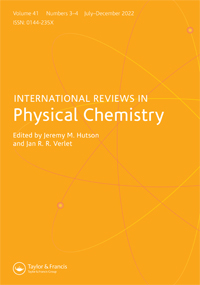可切换机械互锁分子结构建模研究进展
IF 2.5
2区 化学
Q3 CHEMISTRY, PHYSICAL
引用次数: 8
摘要
可切换机械互锁分子结构(MIMAs)的发展是一个活跃的实验和理论研究领域,因为这些系统的环境响应性使它们成为纳入分子机器的理想候选者。这里介绍的是最近的文献,报告这些拓扑复杂系统的理论和计算研究的综述。分析了应用于可切换mima的建模策略,并强调了理论和计算方面的突出挑战。本文章由计算机程序翻译,如有差异,请以英文原文为准。
Advances in modelling switchable mechanically interlocked molecular architectures
Abstract The development of switchable mechanically interlocked molecular architectures (MIMAs) is an active area of experimental and theoretical research because the environmental-responsiveness of these systems makes them desirable candidates for incorporation into molecular machines. Presented here is a review of the recent literature that reports theoretical and computational studies of these topologically complex systems. Modelling strategies that have been applied to switchable MIMAs are analysed and outstanding challenges to theory and computation are highlighted.
求助全文
通过发布文献求助,成功后即可免费获取论文全文。
去求助
来源期刊
CiteScore
14.20
自引率
1.60%
发文量
5
审稿时长
1 months
期刊介绍:
International Reviews in Physical Chemistry publishes review articles describing frontier research areas in physical chemistry. Internationally renowned scientists describe their own research in the wider context of the field. The articles are of interest not only to specialists but also to those wishing to read general and authoritative accounts of recent developments in physical chemistry, chemical physics and theoretical chemistry. The journal appeals to research workers, lecturers and research students alike.

 求助内容:
求助内容: 应助结果提醒方式:
应助结果提醒方式:


